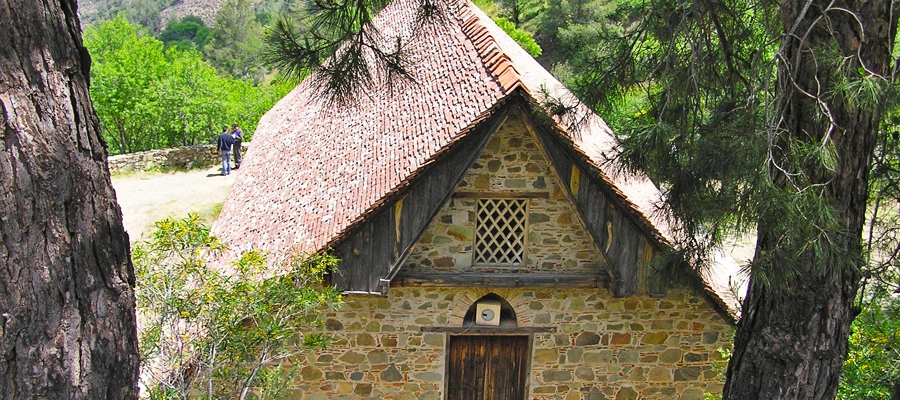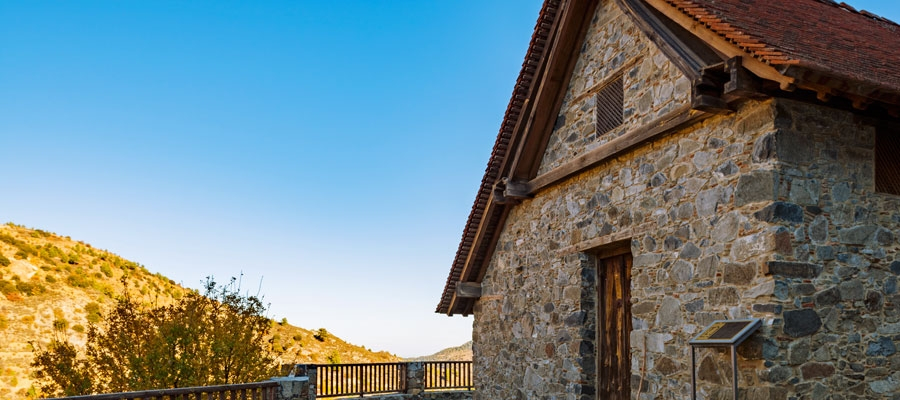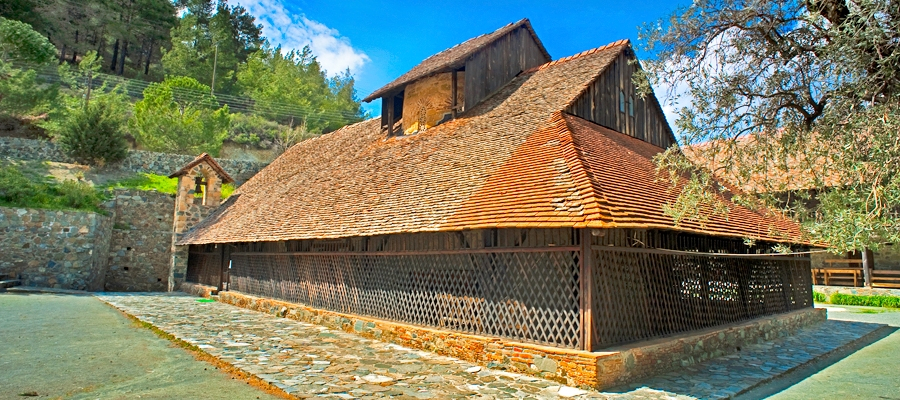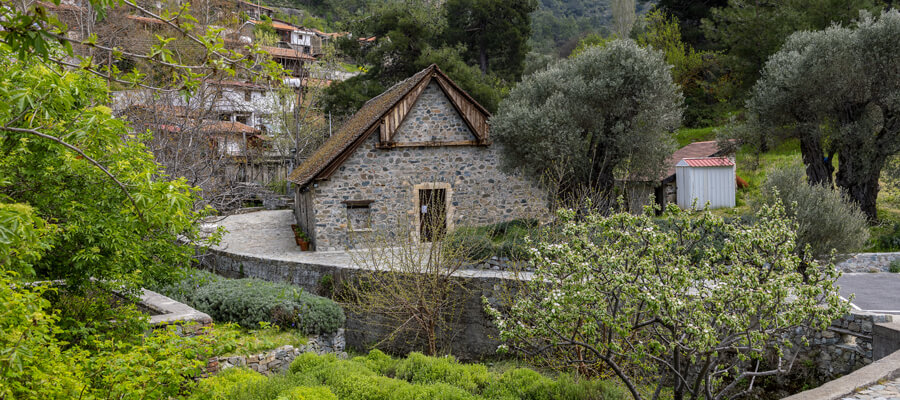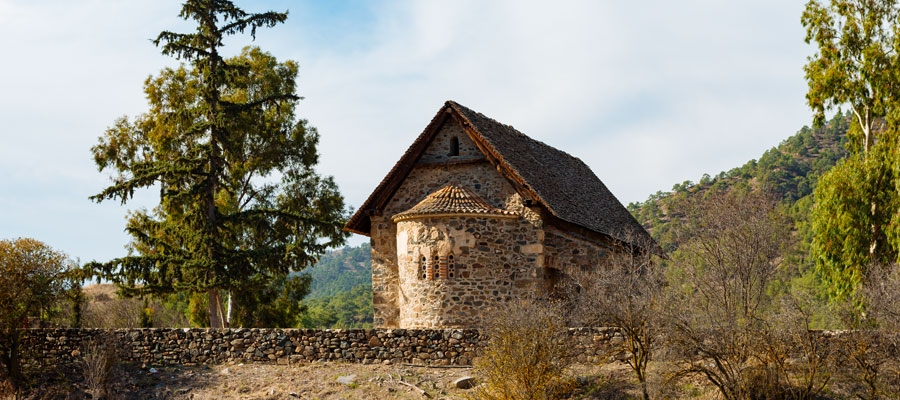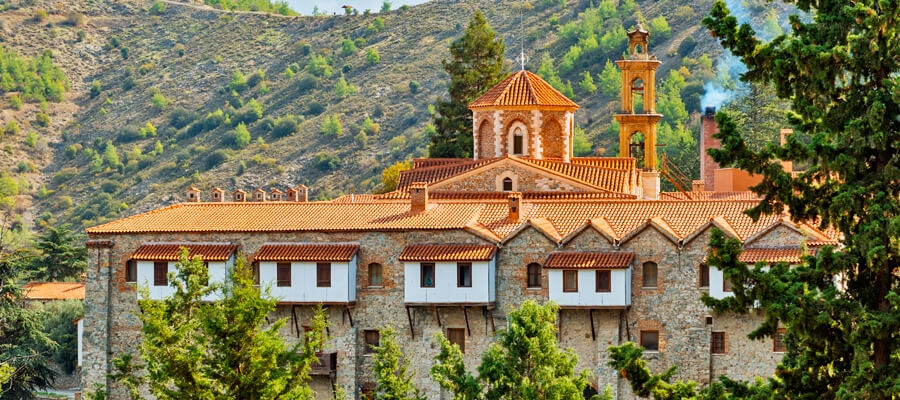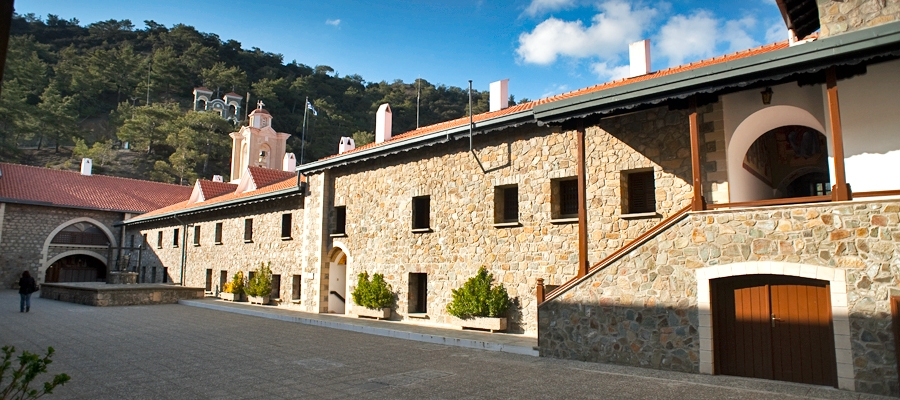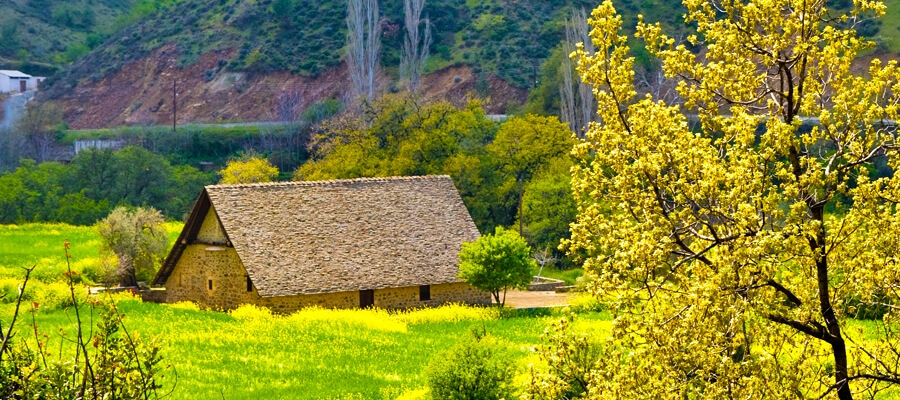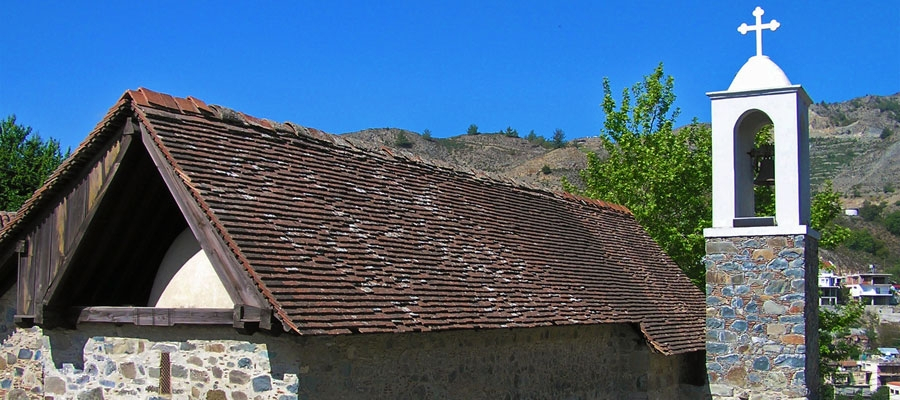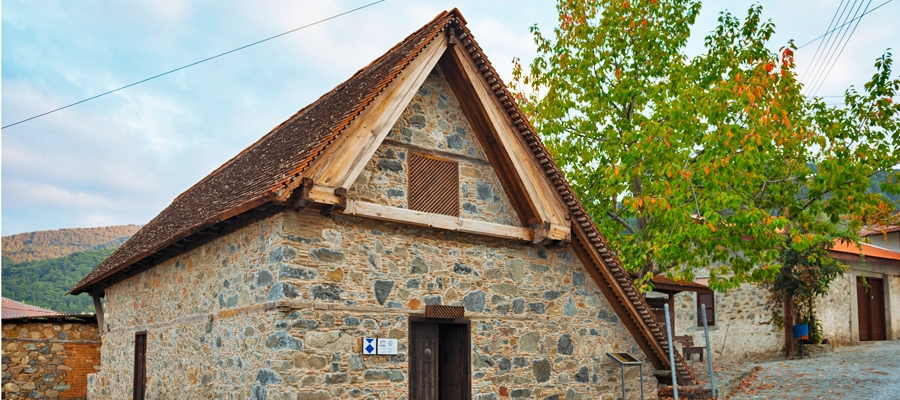Located about 3km outside the mountainous village of Platanistasa, the 15th century church of Stavros tou Agiasmati is a UNESCO World Heritage site and retains the most complete cycles of mural paintings of the second half of the 15th century on the island.
Its name derives from the word ‘Agiasma’ (-atos) which in Greek means ‘sanctified water, spring or well near a church’. The church used to be a monastery church, but only traces of the cells of the monastic buildings remain to the south of the church.
The surviving structure is a single-aisled building with a steep-pitched timber roof covered with flat tiles that extends beyond the main structure to form a portico on all four sides – a feature that is unique in Cyprus. According to an inscription, the building was built with the donation of a priest named Petros Peratis and his wife Pepani, who are both depicted on a fresco offering a model of the church to Jesus with the mediation of the Virgin. Also noteworthy is the extensive and multi-person Last Judgment scene, which unfolds up to the far end of the gable where Jesus Christ is depicted.
Whilst the year of the church’s erection is not known, it is generally accepted that its decoration was completed in 1494.
The Church of the Holy Cross of Agiasmati in Platanistasa – Audio Guide
| Region: | Troodos area [Lefkosia (Nicosia) district] |
| Address: | Platanistasa village |
| GPS coordinates: | Lat: 34.979155 Lon: 33.047013 |
| Contact No for Church: | Tel: +357 99 766 699 or +357 99677216 |
| Operating Hours: | By appointment (enquire at the village coffee shop). |
| Operating Period: |
All year round. Closed on Public Holidays. |
| Entrance Fee: | Free |
| Disabled Access: | Wheelchair accessible. |
| Website: | www.mcw.gov.cy/da |
| Opening and closing times as well as entrance fees, are subject to alterations without notice. Visitors are advised to check before visiting. |

